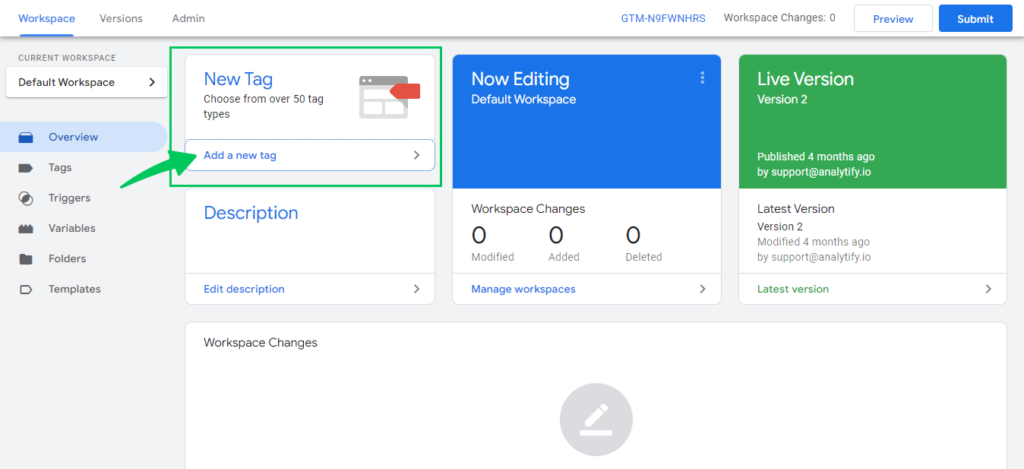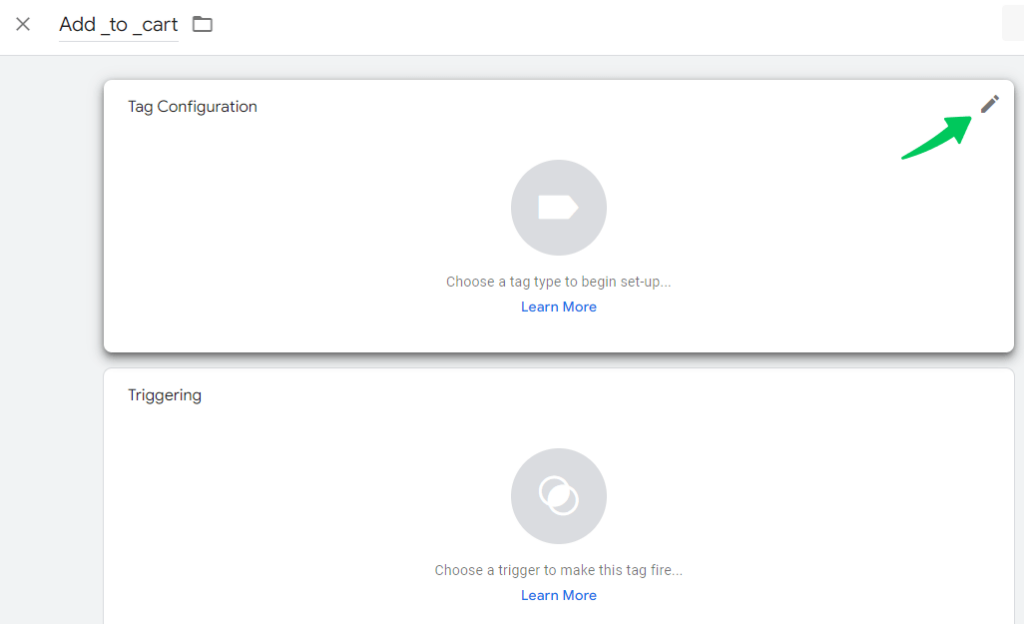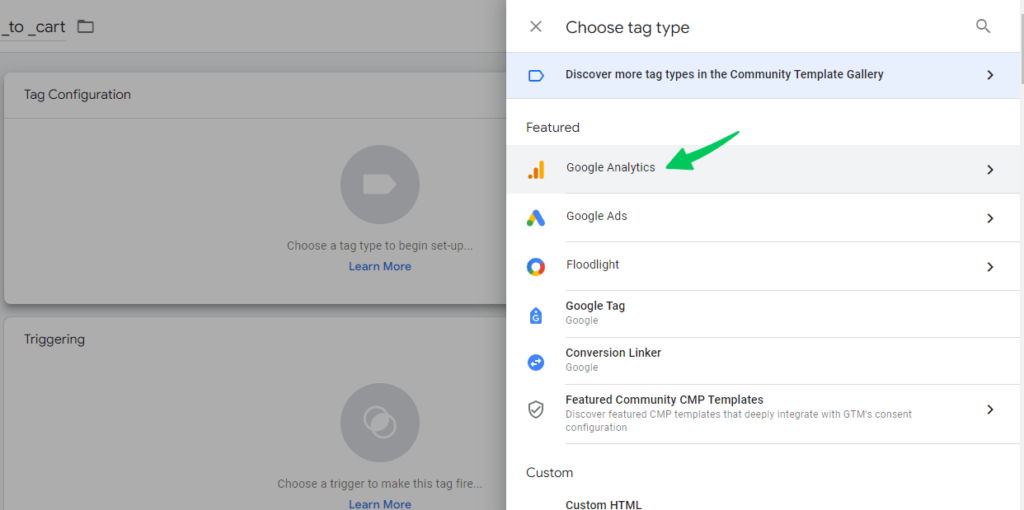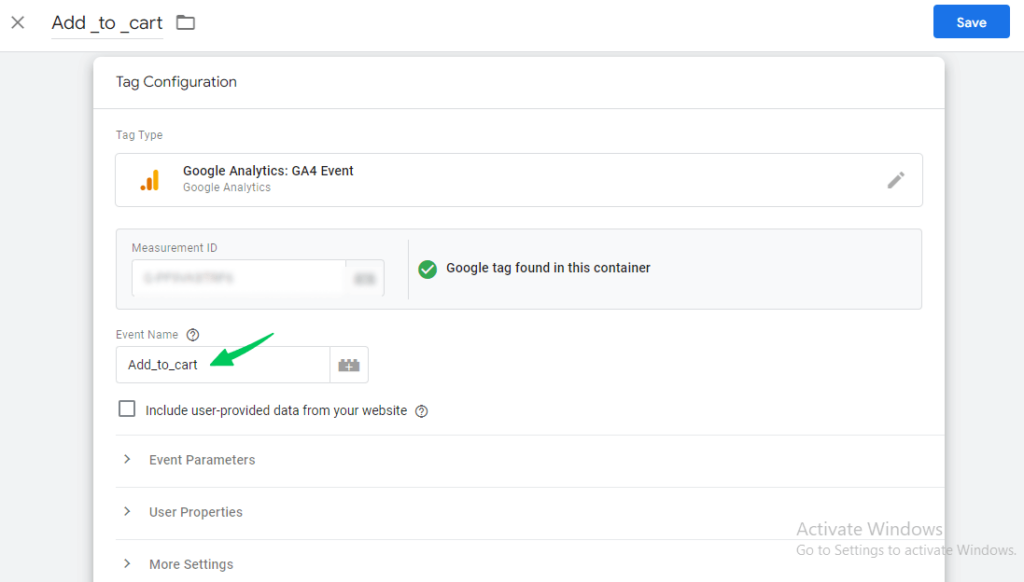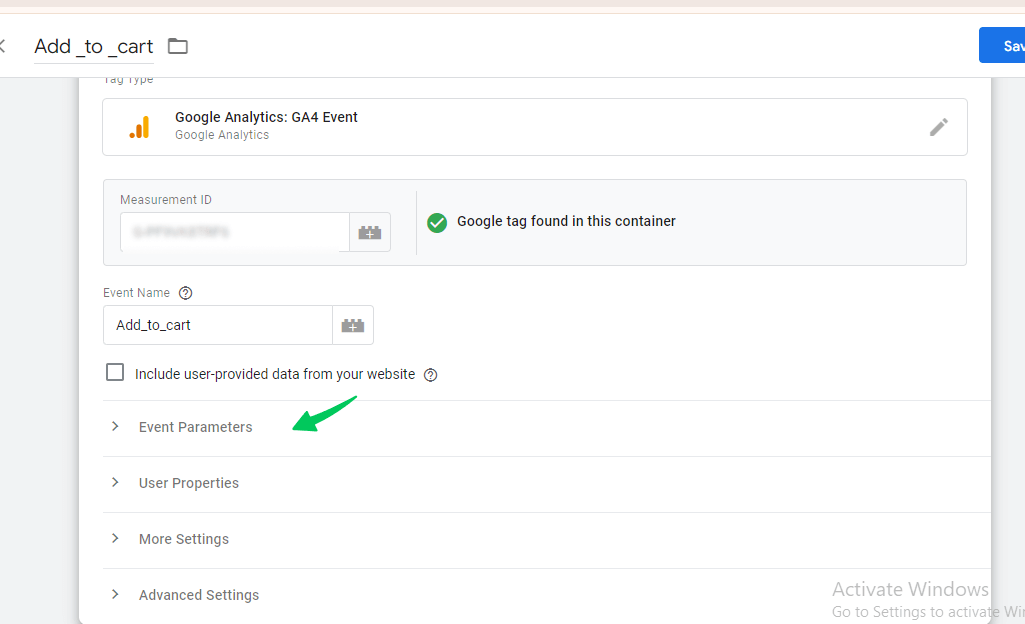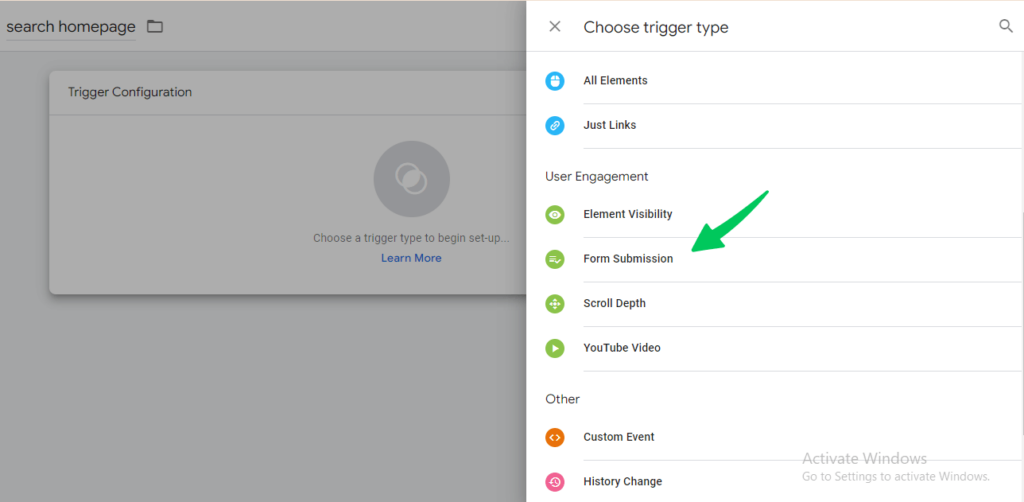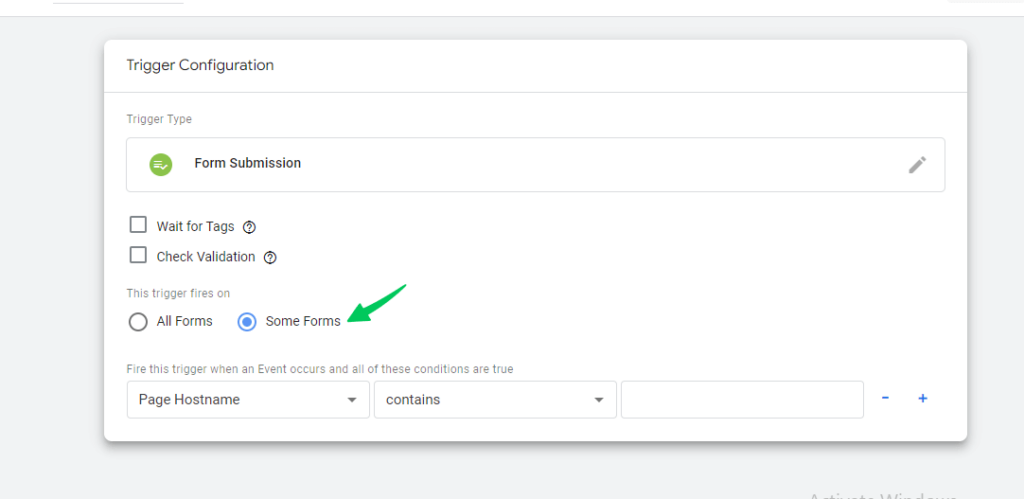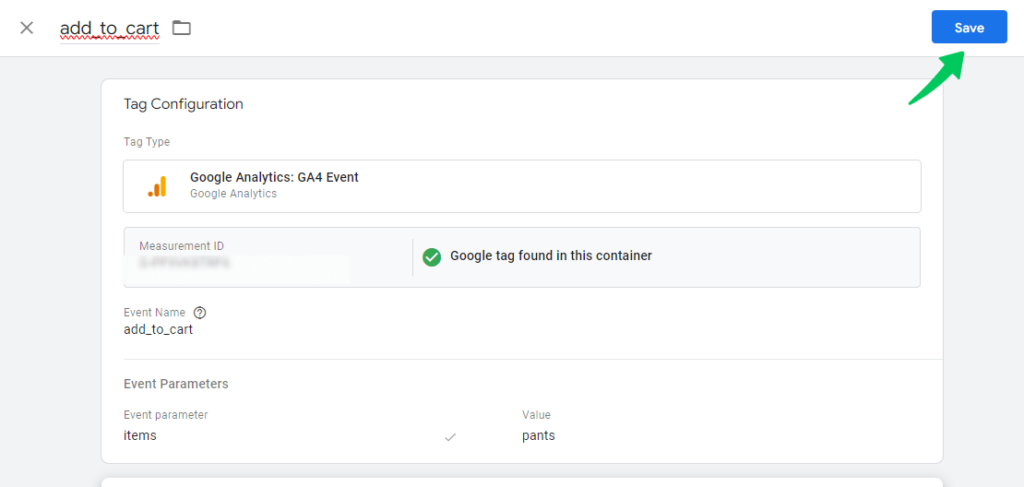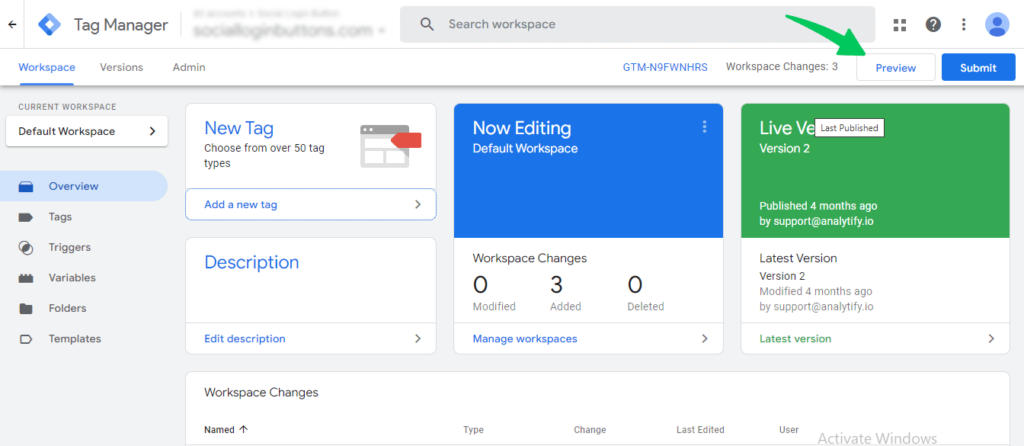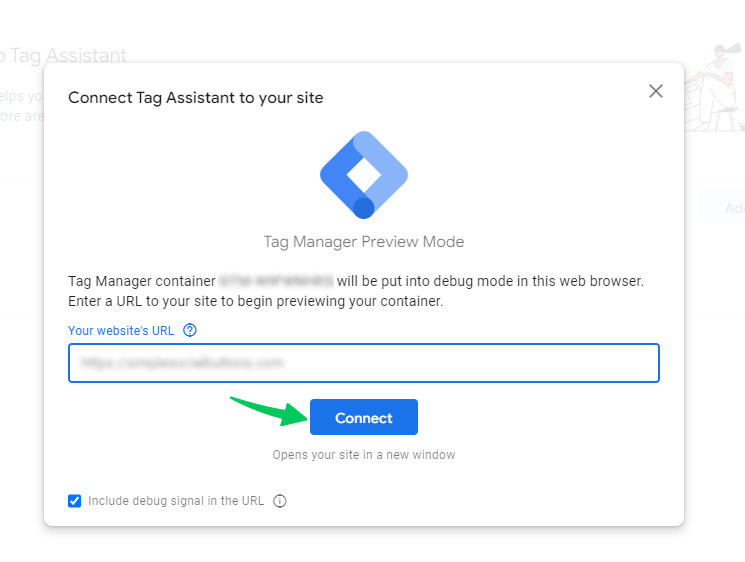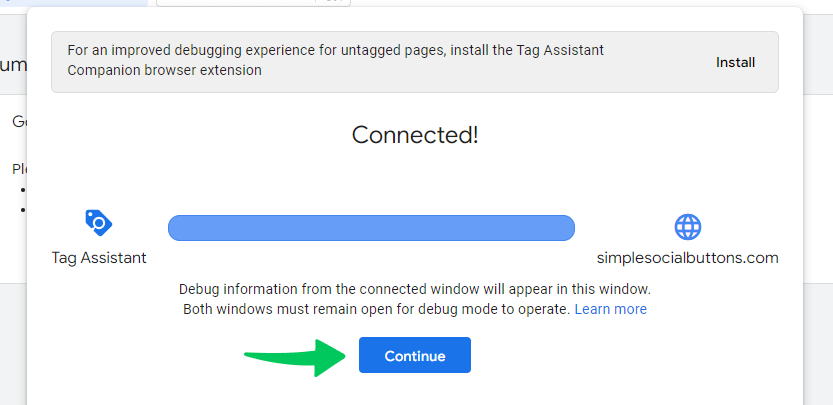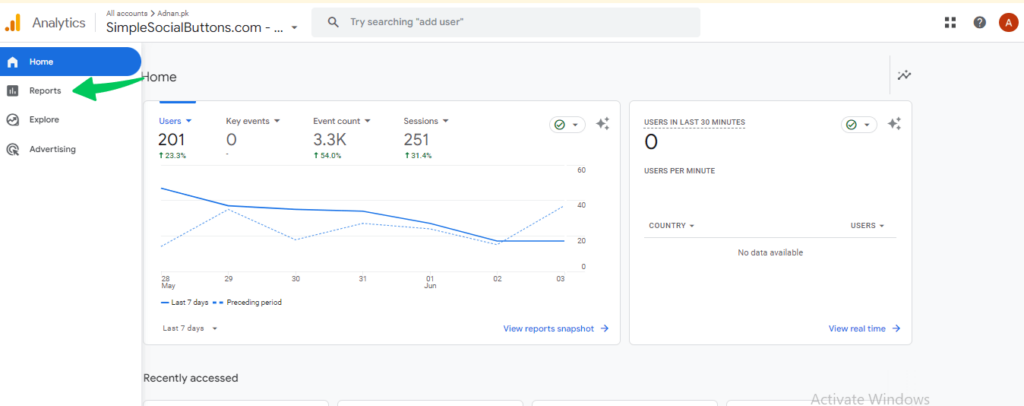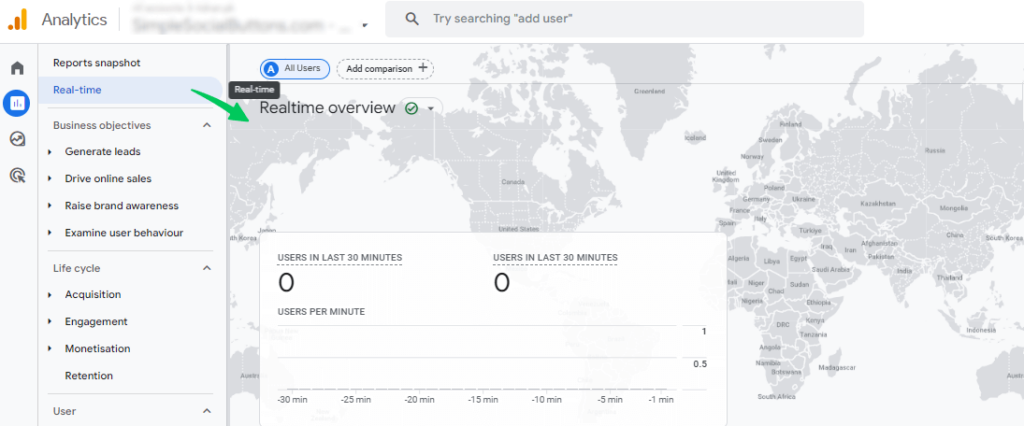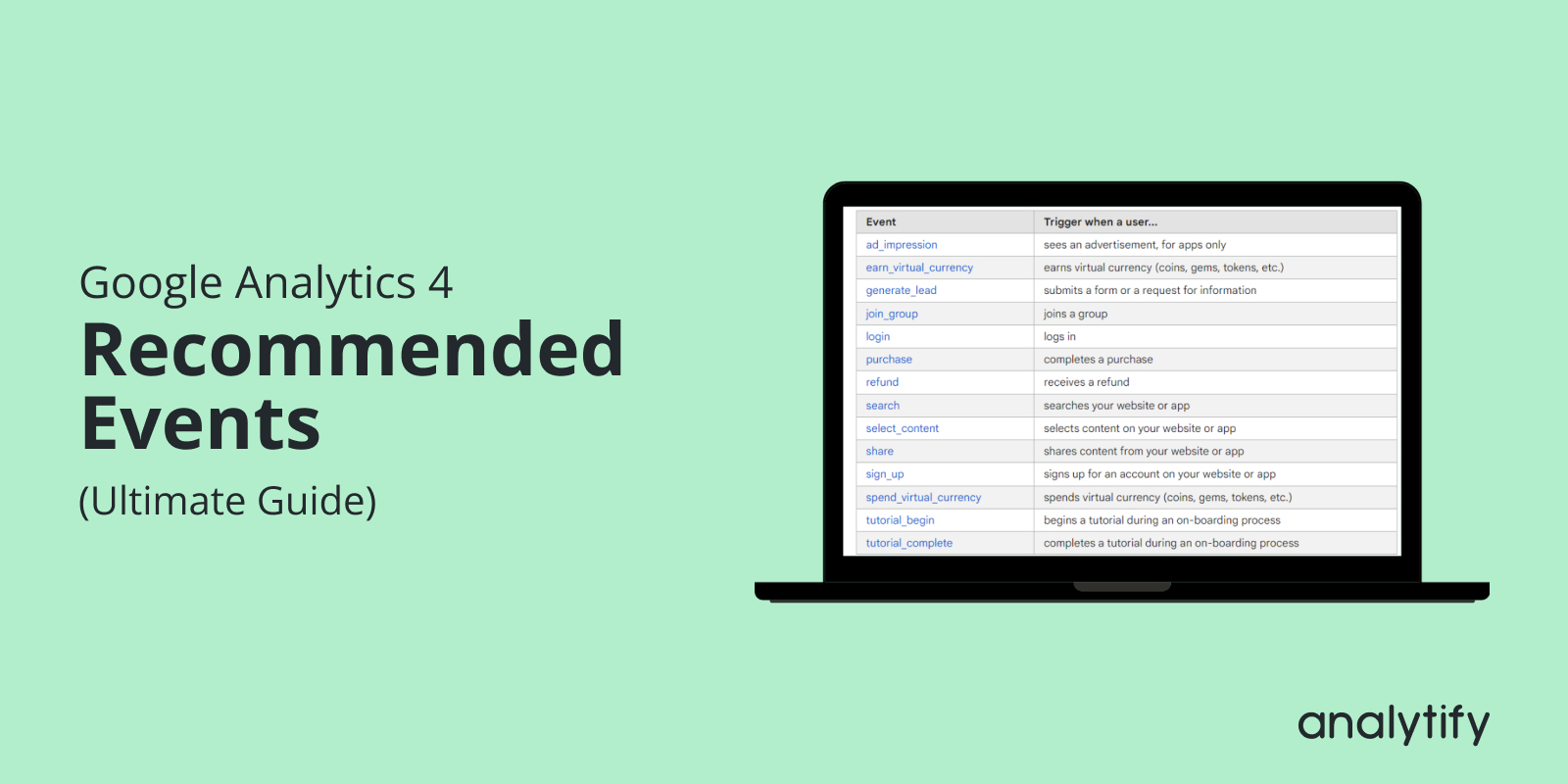
GA4 Recommended Events (Ultimate Guide 2025)
Do you want to discover how GA4 Recommended Events can simplify analytics, offering more profound insights into user behavior?
This guide will teach you about GA4 Recommended Events. We’ll explore what they are, why we use them, and a complete list of recommended events in Google Analytics 4. We will also discuss setting up and confirming your recommended events in GA4.
By the end, you’ll have enough information to better understand your audience through these events and set up your website for success!
Let’s dive right in!
GA4 Recommended Events (TOC):
What are GA4 Recommended Events?
Google Analytics 4 recommended events are pre-defined user interaction measurements within websites. Google recommends tracking these specific actions to gain valuable insights into user behavior. By enabling recommended events, you collect data on pre-configured actions that can help your company understand how users interact with your platform.
Let’s have a broader look at GA4 events.
In Google Analytics 4, Events are actions users take on your website or app that you want to track.
Event tracking in Google Analytics allows you to measure these actions and understand how users interact with your content.
GA4 has four different types of events:
- Recommended events
- Automatically tracked events
- Enhanced measurement events
- Custom events
Why use recommended events in Google Analytics?
Here are the reasons to use recommended events in Google Analytics 4 (GA4) :
- Recommended events are easy to set up because they follow Google’s predefined naming and parameters.
- Implementing recommended events saves time compared to creating and managing custom events. The setup process is smooth, and documentation is readily available.
- Using recommended events helps ensure you get data consistent with how other users track similar things. It means that you can more easily benchmark your data against industry standards.
- Some advanced features in Google Analytics, such as enhanced e-commerce tracking, are only available when using recommended events.
- Recommended events are designed to be compatible with future updates and changes in Google Analytics. It ensures that your tracking remains relevant and functional over time.
However, recommended events are only sometimes necessary. Ensure that the event you choose is relevant to your business.
List of GA4 Recommended Events (With Parameters)
Google recommends a general set of events that apply to all businesses. However, there are also industry-specific recommendations. These can be found in the Google Analytics Events report. The Events report suggests events to collect based on the data you already have or the app category. For instance, an ecommerce store would see different recommendations than a travel website.
Here are the primary business verticals for which Google provides recommended events:
| Category | Event Name | Trigger | Parameters |
| eCommerce | view_item_list | When a user is presented with a list of items that fall under a specific category | item_list_id, item_list_name, items |
| add_shipping_info | When a user submits shipping information during the checkout process | currency, value, coupon, shipping_tier, items | |
| refund | When an item is refunded to a user | currency, transaction_id, value, coupon, shipping, tax, items | |
| add_to_cart | When a user adds an item to their cart to buy | currency, value, items | |
| add_payment_info | When a user submits payment information during the checkout process | currency, value, coupon, payment_type, items | |
| purchase | When a user purchases at least one item | currency, transaction_id, value, coupon, shipping, tax, items | |
| remove_from_cart | When a user removes an item from their cart | currency, value, items | |
| view_cart | When a user views their cart | currency, value, items | |
| view_item | When a user views any piece of content (often for online shopping) | currency, value, items | |
| begin_checkout | When a user begins the checkout process | currency, value, coupon, items | |
| select_item | When a user selects an item from a list (such as “related products”) | item_list_id, item_list_name, items | |
| Travel/eCommerce | add_to_wishlist | When a user adds an item to a wishlist | currency, value, items |
| view_promotion | When a user views a promotion from a list | creative_name, creative_slot, promotion_id, promotion_name, items | |
| generate_lead | When a lead is generated through a form or any other lead capture method | currency, value | |
| Games/Learning | level_end | When a user reaches the end of a level of a game | level_name, success |
| level_start | When a user begins a level within a game | level_name | |
| level_up | When a user moves up a level in a game | level, character | |
| tutorial_begin | When a user starts a tutorial process | N/A | |
| tutorial_complete | When a user finishes a tutorial process | N/A | |
| spend_virtual_currency | When a user spends virtual currency within an app | value, virtual_currency_name, item_name | |
| earn_virtual_currency | When a user is awarded virtual currency within a game, it’s most often used for applications. | virtual_currency_name, value | |
| unlock_achievement | When a user unlocks an in-game achievement | achievement_id | |
| post_score | When a user posts a score achieved in a game | score- level- character | |
| Content (News, Blogs) | Share | When a user shares content to an external platform (such as a social media website) | method, content_type, item_id |
| Search | When a user performs a search on your website or application | search_term | |
| select_content | When a user selects some type of content in a website or application | content_type, content_id | |
| Others | join_group | When a user joins any social community, it’s primarily used in apps. | group_id |
| sign_up | When a user signs up for an account | method | |
| ad_impression | When a user is shown an advertisement in your application | ad_platform, value, currency, ad_source, ad_format, ad_unit_name | |
| login | When a user logs into an app or website | method |
How to Set Up GA4 Recommended Events
Here are the steps on how to set up recommended events GA4 using Google Tag Manager:
Note: Ensure GA4 is set up for your property and that Google Tag Manager is set up on your site. If you haven’t already set up GTM, follow this guide to install it for your website: GTM installation guide.
Once you have GTM set up, proceed with these steps to implement GA4 recommended events:
In Google Tag Manager:
Step 1: Add a new tag
Click “Add a new tag” in the new tag module.
Step 2: Name the tag
The following screen will appear. Name the tag clearly and understandably, such as “add_to_cart.”
Step 3: Tag Configuration
- Select Google Analytics 4 >> Google Analytics: GA4 Event under “Tag Configuration.”
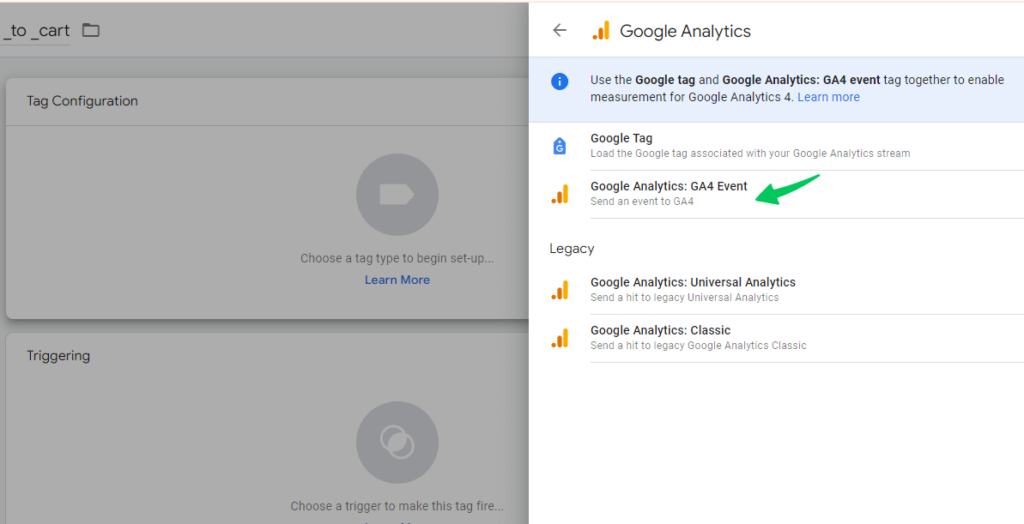
- Enter your property’s “ Measurement ID”.
If you do not know about it, then first find your measurement ID by using the following steps:
- In Admin, under Data Collection and Modification, click Data Streams.
- Select the Web tab.
- Click the web data stream.
- Find the measurement ID in the first row of the stream details.
- Enter the predefined name of the event you want to track, such as “add_to_cart.”
- You can set up any parameters by clicking the “Event Parameters” drop-down menu. Parameters provide additional information about the event.
Step 4: Set Trigger
- Now, we have to set up a trigger. Create a trigger to specify when the event should be tracked. Click on the pen icon.
- You can choose the given triggers or create a new trigger by clicking on the + icon at the top right corner.
- You will see this interface after clicking the + icon. First, name the trigger.
- Select the appropriate trigger type. For example, the trigger type is “Form Submission”.
- Check the “Some Forms” option. Then, fire the trigger.
Step 5: Save the added information
- Save the trigger.
- Save the tag.
Step 6: Preview and publish your changes
Preview and publish your changes by following the instructions in Google Tag Manager.
- Enter your website URL and click on the “connect” tab.
- Then, Click on the “continue” option.
- You can see the tags on the left-hand menu.
- Now, choose the submit option to publish all the changes that you have made.
How to Confirm Your Recommended Events Are Being Tracked in GA4?
So, you’ve set up recommended events in GA4. Now, it’s important to make sure they’re actually tracking user actions. Here are two methods to confirm successful tracking:
Method 1: Realtime Overview Report
This method offers a quick and easy way to see events firing in real time.
Navigate to Reports:
In your GA4 property, go to the Reports section from the left-hand side menu.
Open Realtime Overview:
Select the Real-time overview option.
Look for Event Count:
At the bottom of the report, you’ll find an “Event count by Event name” table. This table shows events that GA4 is currently tracking.
Method 2: DebugView Report
The DebugView report provides a more detailed view of tracked events, including parameters.
Go to GA4 DebugView:
In your GA4 property, navigate to the Admin option.

Enable Data Display:
Click on the Data display tab.
Review DebugView:
In the DebugView report, refresh the page and look for your event name and associated details, such as parameters.

Remember: There might be a slight delay in seeing the event in the reports. Allow it to appear a few minutes after triggering the event.
By following these steps, you can confirm that your recommended events in Google Analytics 4 are being tracked accurately. This will allow you to gain valuable insights into user behavior on your website or app.
How to Analyze GA4 Recommended Events?
Once you’ve confirmed your recommended events are tracking correctly, it’s time to unlock their power! Here’s how to analyze recommended events in GA4 and gain valuable insights into user behavior:
- Navigate to Reports in GA4.
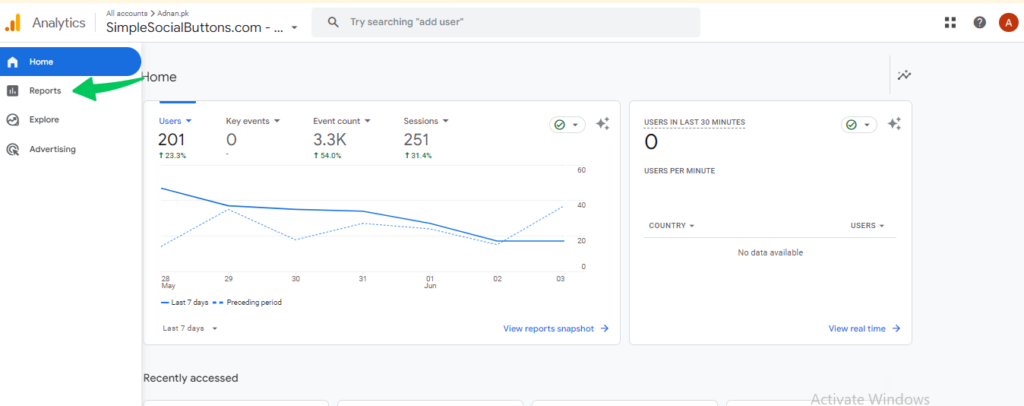
- Choose the Engagement option.

- Select the “Events” tab.
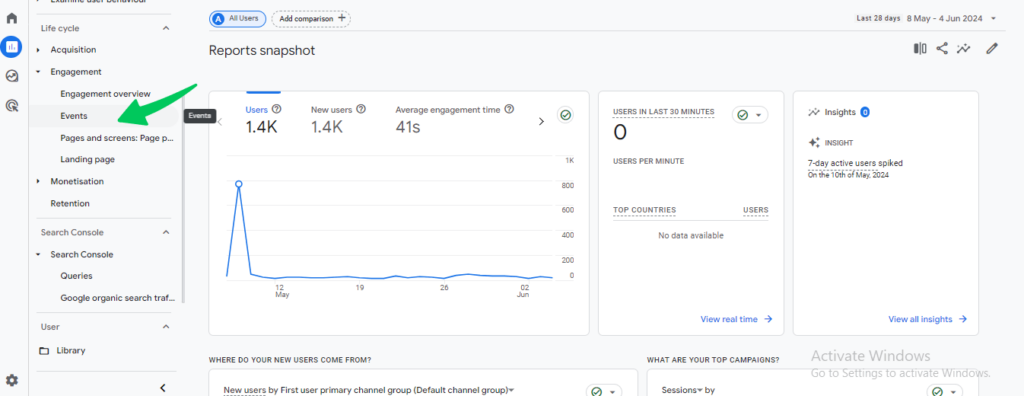
- The Events report provides a complete list of tracked events, their occurrence count, and trends.
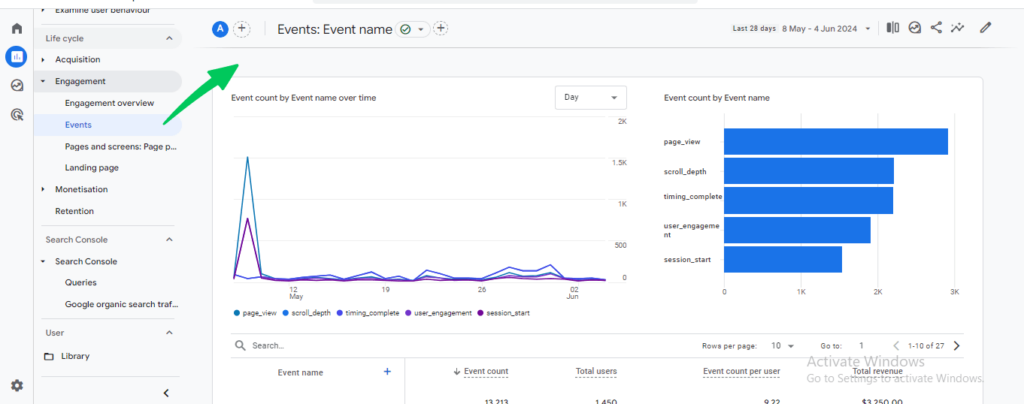
Analyze Event Details:
Once you’ve chosen a report, explore the available data for your recommended event.
- Event Count: This indicates how many times the event occurred.
- Event Parameters: If you’ve set up parameters, you’ll see additional details associated with the event, such as product names, search terms, or checkout options selected.
- Compare to Other Metrics: Analyze event data alongside other relevant metrics, such as conversion rates, revenue, or session duration, to understand the event’s impact on overall user behavior.

By following these steps and continuously analyzing your recommended events, you can gain valuable insights into user behavior on your website or app. This knowledge can then be used to optimize your marketing strategies, improve user experience, and ultimately drive business growth.
Bonus: GA4 Events Tracking in WordPress
While setting up GA4 recommended events directly involves some technical knowledge, there are easier ways to achieve this within your WordPress dashboard. Analytify is a powerful WordPress plugin that simplifies Google Analytics 4 integration and event tracking.
Join 50,000+ Beginners & Professionals who use Analytify to Simplify their Google Analytics!
Here’s how it can help:
Analytify seamlessly connects your WordPress site to your GA4 property.
Analytify offers a user-friendly interface to set up recommended events . You can also create custom events specific to your website’s needs.
In addition to these features, Analytify offers an Events Tracking Addon that takes your event tracking capabilities to the next level.
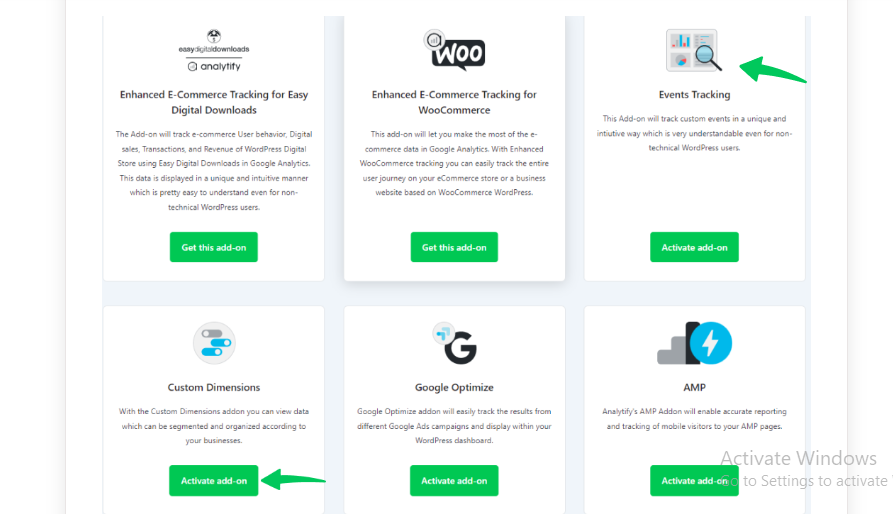
This addon allowing you to gather more specific data about user interactions on your WordPress site.
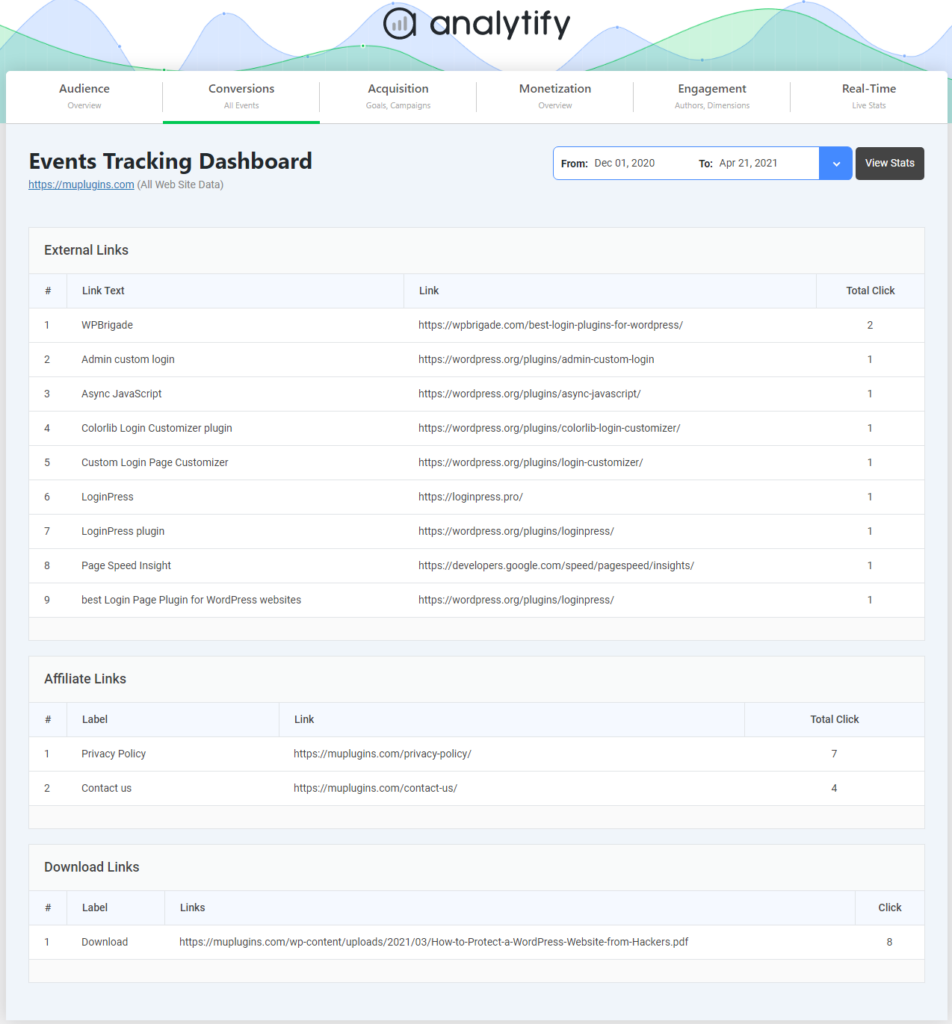
Analytify tracks events across all devices (desktop, mobile, tablet), ensuring a complete picture of user interactions.it empowers you to optimize your marketing strategies and user experience based on user actions.
By using Analytify, you can avoid technical complexities and effortlessly track recommended and custom events within your WordPress dashboard. This lets you gain valuable user insights to improve your website’s performance and achieve your business goals.
GA4 Recommended Events FAQ
1. What are recommended events in GA4?
Google Analytics 4 (GA4) offers a set of recommended events that are pre-defined actions you can track to understand user behavior on your website or app. These events are designed to be consistent across different businesses, making benchmarking your data against industry standards easier. For example, add_payment_info.
2. What type of events does GA4 normally track?
GA4 tracks two main types of events:
Automatically Collected Events: GA4 automatically captures these events by default without any additional setup. They provide basic information about user interactions, such as page views, scroll depth, and user engagement.
Custom Events and Recommended Events: These events require you to set them up specifically to track necessary user actions for your business.
3. What events are automatically collected in GA4?
GA4 automatically tracks core events like session starts, page views, scroll depth, and engagement time to understand basic user behavior on your website or app. Depending on your platform, it might also collect additional events, such as in-app purchases (for apps), video engagement (for videos), and form interactions.
4. What events should I set up in GA4?
Here are the events you should set up in GA4 for deeper insights:
Recommended Events: Track industry-standard actions like “add_to_cart” or “sign_up” for easier comparison with benchmarks.
Custom Events: Capture specific user interactions important to your business, like button clicks or form submissions.
These go beyond automatic events (page views, sessions) and provide a more tailored view of user behavior on your website or app.
5. Which events are accounted for in the real-time report GA4?
The GA4 real-time report focuses on events within the last 30 minutes and provides a snapshot of current user activity. Here’s what it accounts for:
Event Count by Event Name: This section displays the number of times each custom event, and the recommended event has been triggered in the past 30 minutes.
Users by Event: This section might show the number of users who triggered specific events during the timeframe.
The real-time report does not include automatically collected events like page views or sessions; these are reflected in other GA4 reports.
Recommended events in Google Analytics 4: Final Thoughts
That’s it! We’ve delved deep into recommended events in GA4, exploring everything from their purpose to setting them up and analyzing the data they provide.
Using this knowledge alongside custom events in GA4 empowers you to comprehensively understand how users interact with your platform. You can identify areas for improvement on your website or app, personalize marketing messages based on user actions, and effectively measure the impact of your marketing campaigns.
But remember, this is just the beginning! The world of GA4 user tracking is vast. What questions do you have? Leave a comment below and share your thoughts.

